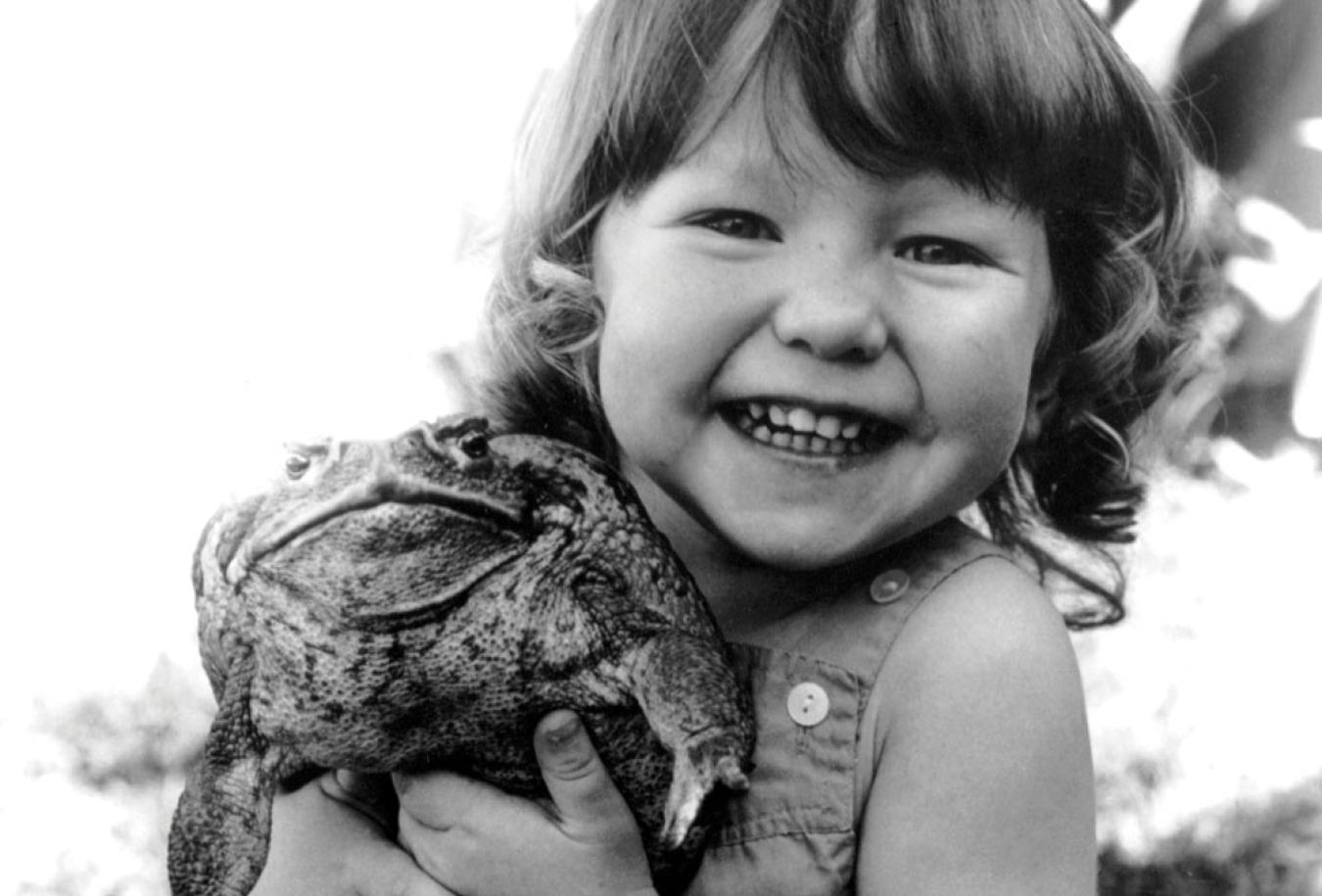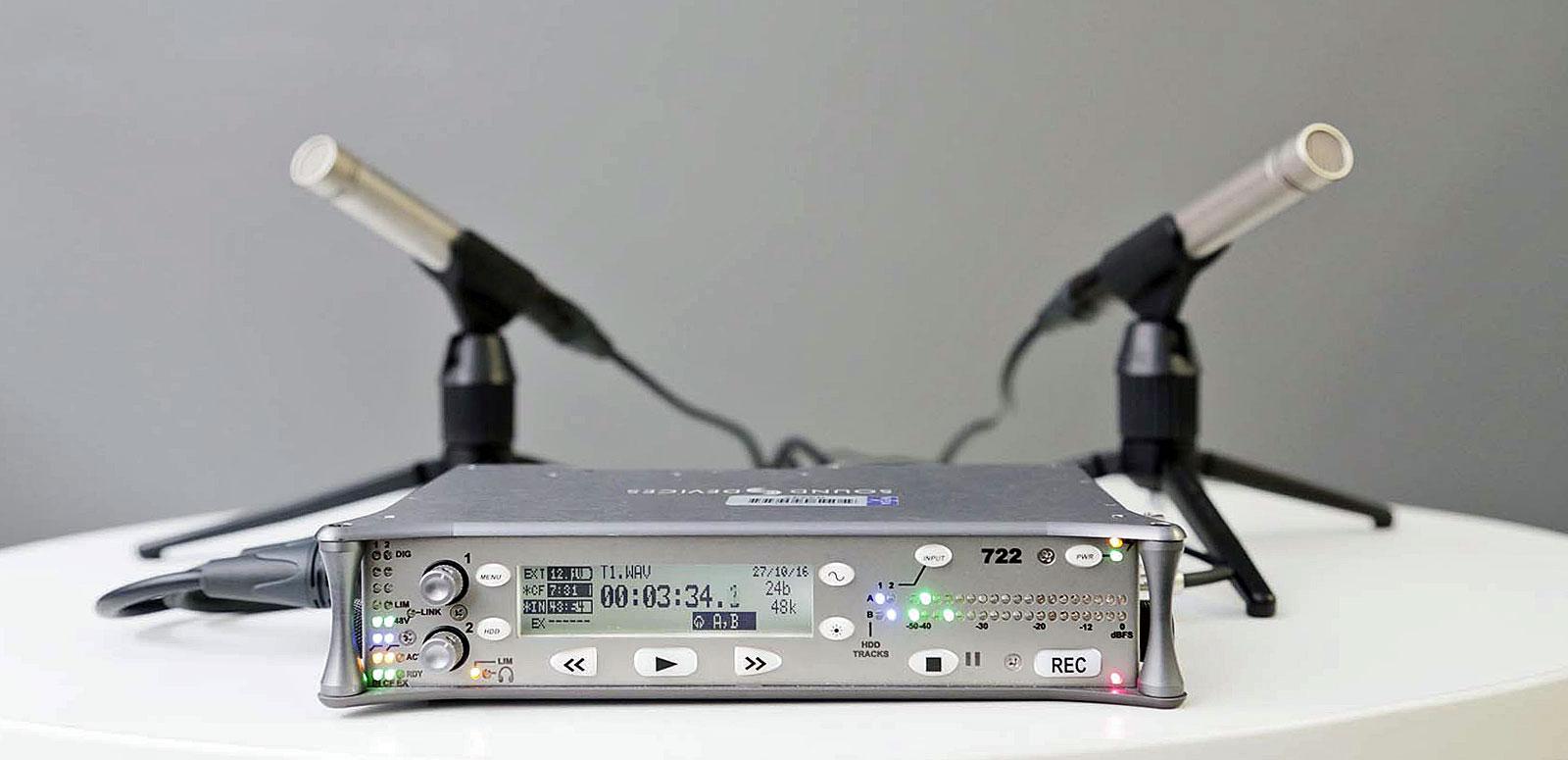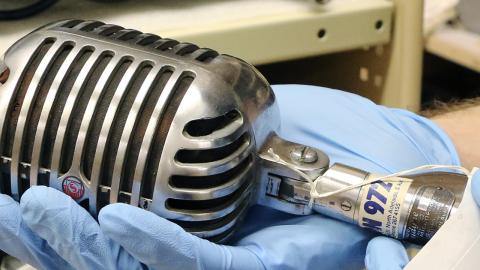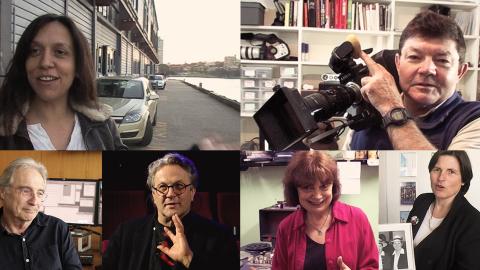

Oral History: Film crew
Part Five: Film crew
The Oral History program provides personal recollections of careers in film, TV, radio or recorded sound. This week we’re featuring recent Oral History interviews with actors, musicians, journalists and directors. Today we’re looking at various members of the film crew.
Read an outline of the interviews below, and listen to excerpts or the full interviews embedded from SoundCloud.
John Bowring
John Bowring has worked as a film armourer for more than 35 years.
He explains how he sources weapons internationally, what happens to them after filming, and how he must work within the law, even though the laws are different in each Australian state. He talks about advising governments on policies for film firearms. John also explains how he makes foam replicas and blanks and the use of holster butts.
He began as a gunsmith and rented weapons to films, and was then employed on Mad Max Beyond Thunderdome (1985) as a special effects weapons maker. Later he was the Key Armourer on the biggest firearms film made in Australia, The Thin Red Line (1998), and he describes his safety procedures when working with actors and hundreds of extras. His job requires an understanding of digital effects for muzzle flashes and knowledge of historical weapons and procedures. He works with the Australian Army History Unit and military advisors during filming. On The Great Raid (2005) he worked with the Director of Photography to light a scene by gunfire.
He is also responsible for other weaponry such as crossbows and swords. In this excerpt, John tells how he made the knife for ‘Crocodile’ Dundee (1985):
John Bowring interviewed by Pam Willis Burden (2011), Oral History.NFSA title: 1053192
John sourced the appropriate rifle for Hugh Jackman on Australia (2008), brought in a mini-gun for The Matrix (1999) and X-Men Origins: Wolverine (2009), and discusses the need to work closely with Customs and government departments to import and export weapons for films.
Pam Willis Burden interviewed John Bowring in March 2011 and you can listen to the full interview on SoundCloud:
Evanne Chesson
Evanne Chesson is an animal wrangler. She won the 1993 Byron Kennedy Award at the AFI (now AACTA) Awards.
She began by supplying horses for Marlboro cigarette commercials and the ABC TV series Ben Hall (1975). In her interview, she explains how she trains her animals to perform before the cameras – not only dogs and horses but camels, kangaroos, emus, crows, rats – and the echidna used in the ‘Sic ‘em Rex’ series of AntzPantz commercials (1996). She describes the logistics of her work – for the filming of Phar Lap (1983), for example, 13 different horses were required to manage the workload of the eponymous equine hero.
In this excerpt, Evanne talks about dogs doubling for dingos and working on Evil Angels (1988):
Evanne Chesson interviewed by Pam Willis Burden (2013), Oral History.NFSA title: 1176533
Many of the animal stars she has trained – such as Russell Crowe’s horse in The Silver Brumby (1993) – end up living on Evanne’s property near Kyneton in Victoria.
Pamela Willis Burden interviewed Evanne Chesson in Victoria in December 2013 and you can listen to the full interview on SoundCloud:
Leo Sullivan
Leo Sullivan has more than 30 years’ experience in the film and television industries. Principally known for his expertise as a location sound recordist, he has also worked as an editor, director, producer, sound mixer and camera operator.
He started in the Sound departments of Eric Porter Studios and Supreme Studios. He discusses his early work as a location recordist on Journey Among Women (1977), his working relationships with directors Curtis Levy, Bill Bennett, Jane Campion and Aviva Zeigler in the 1980s, and his role on Film Australia’s Real Life series (1987).
In this excerpt, Leo talks about the memorable moments that stand out in some of the documentaries he’s worked on:
Leo Sullivan interviewed by Alec Morgan (2013), Oral History. NFSA title: 1149966
Leo describes some of the difficulties of recording sound on observational documentary and his approach to studio recording on sets.
Alec Morgan interviewed Leo Sullivan in September 2013 and you can listen to the full interview on SoundCloud:
The National Film and Sound Archive of Australia acknowledges Australia’s Aboriginal and Torres Strait Islander peoples as the Traditional Custodians of the land on which we work and live and gives respect to their Elders both past and present.


